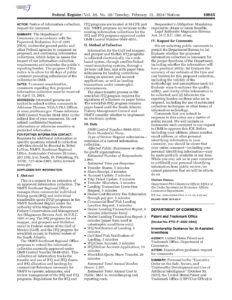By J. Karl Gross
On February 13, 2023, the U.S. Patent and Trademark Office published “Inventorship Guidance for AI-Assisted Inventions” (“Guidance”) addressing artificial intelligence as it may be applied in the development of inventions that are the subject of patents and applications. The Guidance is intended to provide assistance and direction to USPTO personnel and to patent applicants. The two fundamental points made are that (1) although AI as a non-person cannot be an inventor to whom a patent may be granted, (2) the use of AI by a natural person, or assistance obtained by a person from AI during the invention process, will not categorically render an invention unpatentable, so long as a human has also significantly contributed to the invention.
As to the first point, the Guidance reiterates the Federal Circuit’s 2022 opinion in Thaler v. Vidal [1] holding that under the current U.S. patent laws “only a natural person can be an inventor, so AI cannot be.” Consequentially, the Guidance directs that AI systems should not be listed as an inventor on any applications or accompanying papers, including inventor oaths or declarations. The prohibition against AI inventorship applies even if an AI system has been instrumental in creating the inventive subject matter of the patent or application.
The Guidance also states that patents on inventions created using AI assistance are not absolutely prohibited. Instead, if a human has “significantly contributed” to an invention in a manner that qualifies him or her as a joint inventor, as may be determined using traditional inventorship inquires, then the AI-assisted invention will be patentable. Moreover, the human contribution to the invention process is sufficient for patentability “irrespective of the contributions provided by an AI system or other advanced system.” The focus of the inventorship inquiry, however, remains on the human contribution in order to incentivize and reward human ingenuity.
The guidelines further advise that three traditionally employed factors, referred to as the Pannu factors [2], should be evaluated to assess whether a human qualifies as a joint inventor with respect to AI-assisted inventions. The Pannu factors require that a joint inventor must (1) contribute in some significant manner to the conception of the invention, (2) make a contribution that is not insignificant when measured against the full invention, and (3) do more than merely explain well-known concepts or the state of the art.
To apply the Pannu factors in the context of AI-assisted inventions, the Guidance provides a non-exhaustive list of principles:
- The use of AI does not negate a person’s contribution to the invention, and if that contribution is significant, it will qualify that person as a joint inventor.
- Merely recognizing a problem, or having a general goal for an AI system, will not qualify as a significant contribution. However, a significant contribution may occur where a person has constructed specific prompts to elicit a particular solution from an AI system.
- Reducing an invention to practice is insufficient. However, a person who makes a significant contribution to the output of an AI system may qualify as a joint inventor.
- Designing, building, or training an AI system that is directed to a specific problem to elicit a particular solution may qualify as a significant contribution.
- Maintaining intellectual dominion or ownership over an AI-system is insufficient to qualify as a significant contribution necessary to establish a person as a joint inventor.
In conjunction with the principles provided in the Guidance, the USPTO published two illustrative examples of determining inventorship in hypothetical scenarios where an AI-system plays a role in the invention process. The examples assess the patentability of draft patent claims in view of the differing contributions from the AI system and from humans.
In view of the Guidance and examples, applicants and putative inventors should be cognizant of, and document, the precise role of AI systems that may be employed in their creative processes. The principles and examples are particularly helpful in managing human interactions with and human use of AI systems for the purpose of establishing that at least one natural person makes a significant contribution and will qualify as a joint inventor.
The Guidance will also assist practitioners in drafting claims to capture the significant contributions from human participants and ensure patentability. Appropriate claim drafting is especially important since the Guidance requires the cancelation of any independent or dependent claim that cannot be attributable to at least one human inventor.
Finally, the USPTO announced it may modify or provide additional guidance on AI-assisted inventions and has invited the public to submit comments or feedback by May 13, 2024.
Footnotes
[1] Thaler v. Vidal, 43 F.4th 1207 (Fed. Cir. 2022).
[2] Pannu v. Iolab Corp., 155 F.3d 1351 (Fed. Cir. 1998).


